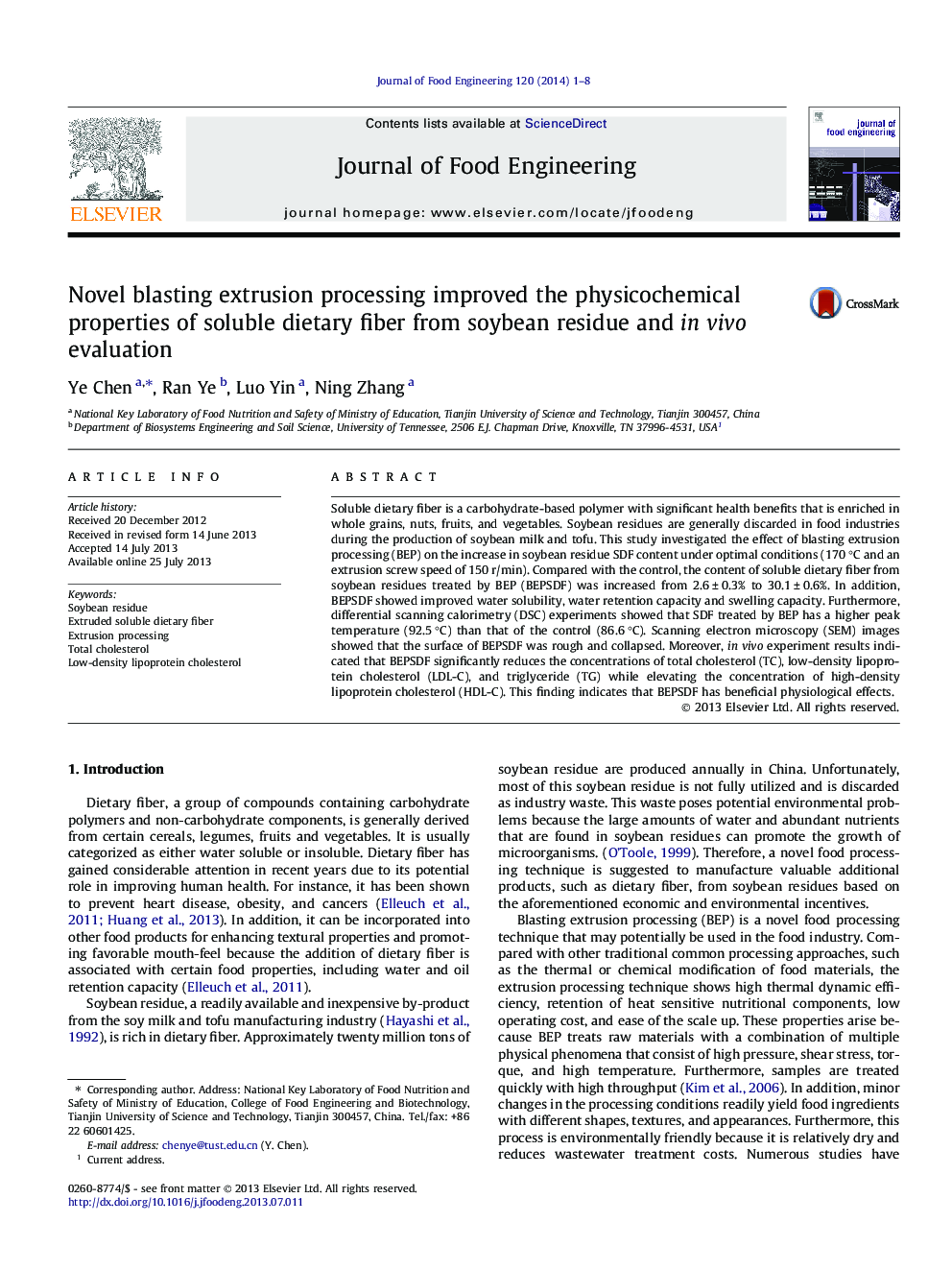| Article ID | Journal | Published Year | Pages | File Type |
|---|---|---|---|---|
| 223303 | Journal of Food Engineering | 2014 | 8 Pages |
•BEP treatment for the extraction of soluble dietary fiber was optimized.•BEP treatment improved the physicochemical properties of soluble dietary fiber.•BEP treatment significantly enhanced the yield of soluble dietary fiber.•BEP treated soluble dietary fiber with modified structural properties showed improved functionality.
Soluble dietary fiber is a carbohydrate-based polymer with significant health benefits that is enriched in whole grains, nuts, fruits, and vegetables. Soybean residues are generally discarded in food industries during the production of soybean milk and tofu. This study investigated the effect of blasting extrusion processing (BEP) on the increase in soybean residue SDF content under optimal conditions (170 °C and an extrusion screw speed of 150 r/min). Compared with the control, the content of soluble dietary fiber from soybean residues treated by BEP (BEPSDF) was increased from 2.6 ± 0.3% to 30.1 ± 0.6%. In addition, BEPSDF showed improved water solubility, water retention capacity and swelling capacity. Furthermore, differential scanning calorimetry (DSC) experiments showed that SDF treated by BEP has a higher peak temperature (92.5 °C) than that of the control (86.6 °C). Scanning electron microscopy (SEM) images showed that the surface of BEPSDF was rough and collapsed. Moreover, in vivo experiment results indicated that BEPSDF significantly reduces the concentrations of total cholesterol (TC), low-density lipoprotein cholesterol (LDL-C), and triglyceride (TG) while elevating the concentration of high-density lipoprotein cholesterol (HDL-C). This finding indicates that BEPSDF has beneficial physiological effects.
